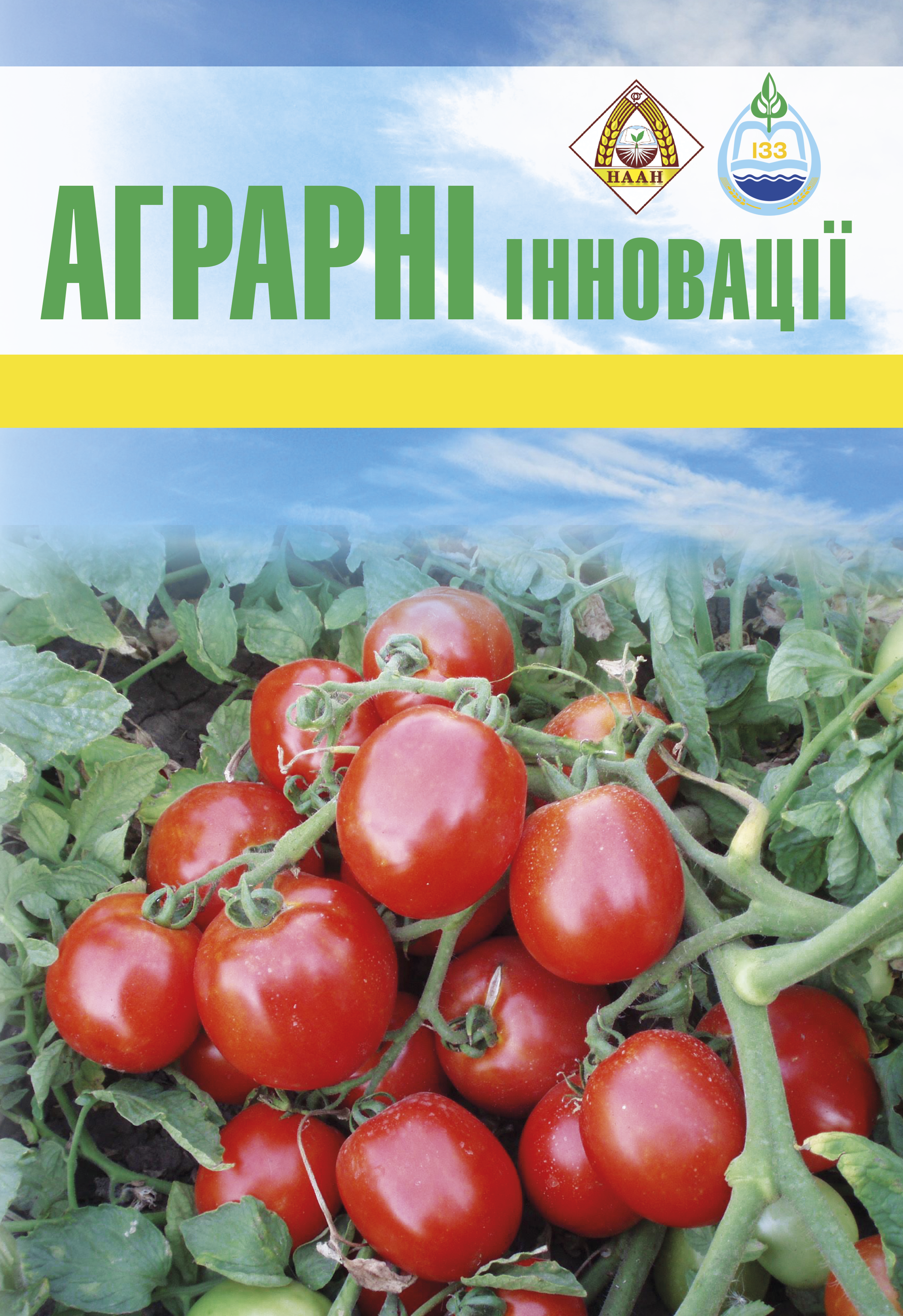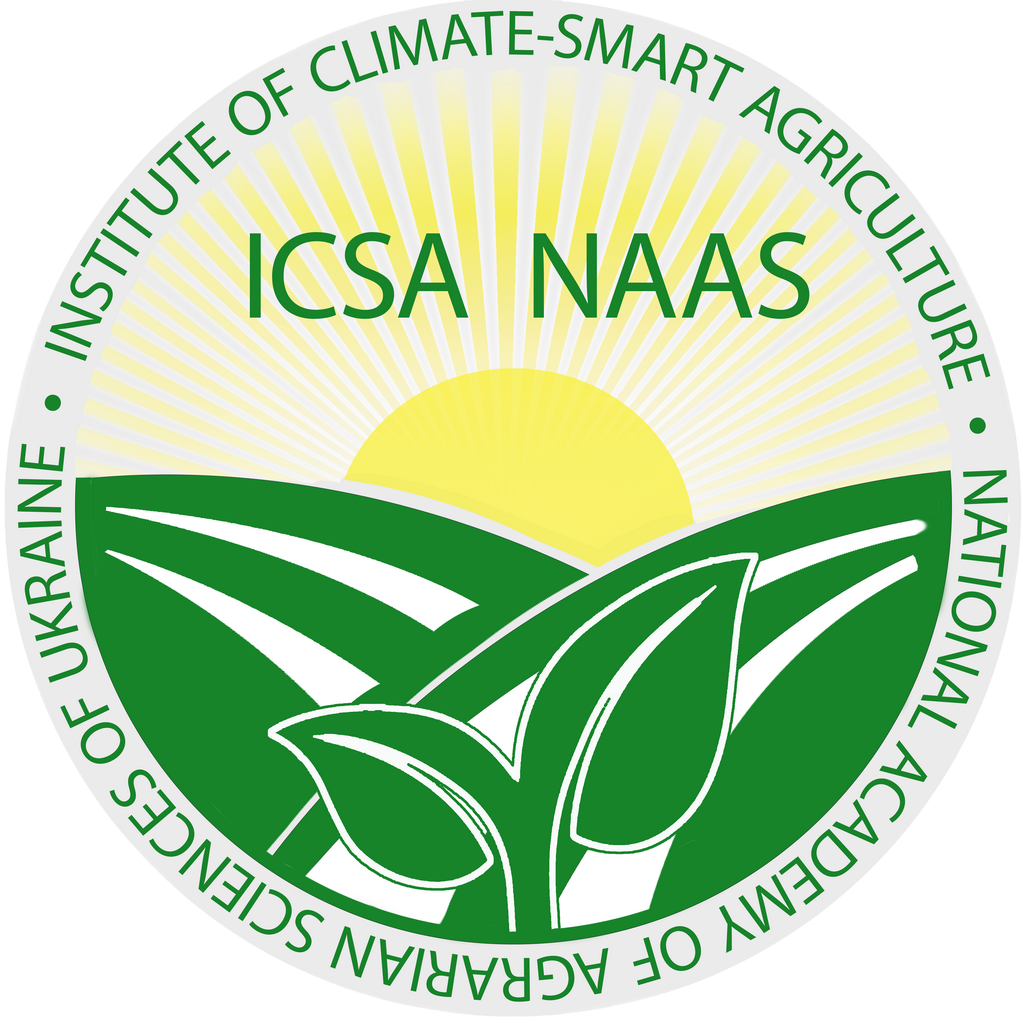The role of oil radish root biomass in the formation of its potential green manure productivity
Abstract
The aim of the research was to establish the peculiarities of formation of bioproductivity of oil radish root system from the position of total weight and spatial weight parameters within the soil profile as additional parameters for establishing its green manure potential in spring and summer sowing. Methods. The study was conducted during 2014–2024 on the experimental field of Vinnytsia NAU on gray forest soils with medium fertility potential. The experiment was replicated four times. The placement of the variants is systematic in two tiers. The experiment involved the study of two green manure options – summer green manure with spring sowing and autumn green manure with summer sowing – of such parameters as: bioproductivity of the root system in total wet and dry matter, root length density (RLD), root mass density (RMD), specific root length (SRL, m/g) and percentage of root mass distribution in the soil profile (PRWD). Results. The levels of bioproductivity of root biomass formation at two basic terms of sowing oil radish as a green manure were determined. The structure of weight distribution of the root system in the context of a meter soil profile with a technological step of 10 cm was analyzed with full detailing of the nature of the spatial morphometry of the root system in the vertical and radial directions of the profile. The long-term dynamics of the formation of such morphometric and morpho-weight characteristics of the root system as: root length density, root mass density, specific root length, percentage of root mass distribution in the soil profile was determined by the depth of the profile. The participation of the root system in the formation of its sideration potential of oil radish in the share of the formed root mass as an additional component of bioorganic fertilization systems was proved. Conclusions. It has been proved that the root system of oil radish, both in terms of bioproductivity and adaptability in terms of the formation of its spatial morphometry and the proportion of presence in different horizons of the total meter soil profile in comparison with other traditional cruciferous green manure crops, forms a positive morphotype that guarantees the active interaction of the rhizosphere of the four-level organization structure with the soil profile 60–80 cm deep during spring and 40–60 cm during summer sowing of green manure. On the basis of this, oil radish should be attributed to the group of potentially effective green manure crops suitable for bioorganic green manure systems with an active influence on the systemic agrophysical parameters of the soil profile.
References
2. Fonseca W. da S., Martins S. V., Villa P. M. Green Manure as an Alternative for Soil Recovery in a Bauxite Mining Environment in Southeast Brazil. Floresta E Ambiente. 2023. Vol. 30. № 1. e20220041.
3. Kucerik J., Brtnicky M., Mustafa A., Hammerschmiedt T., Kintl A., Sobotkova J., Alamri S., Baltazar T., Latal O., Naveed M., Malicek O., Holatko J. Utilization of Diversified Cover Crops as Green Manure-Enhanced Soil Organic Carbon, Nutrient Transformation, Microbial Activity, and Maize Growth. Agronomy. 2024. Vol. 14. № 9. 2001.
4. Pisarčik M., Hakl J., Toleikiene M., Fuksa P., Rasmussen J., Hood-Nowotny R. Role of cover crop roots in soil organic carbon accrual – A review. European Journal of Soil Science. 2024. Vol. 75. № 4. e13532.
5. Patra A., Singh R.P., Kundu M.S., Kumar G., Malkani P., Singh B.K., Choudhury S., Kundu A., Mukherjee S. Green Manuring: A Sustainable Approach for Soil Health Improvement. Agriculture & Food E-Newsletter. 2023. Vol. 05 (04). P. 198–201.
6. Pandey A., Kumar K. The Role of Green Manure in Soil Conservation. Vigyan Varta. 2024. Vol.5. № 8. Р. 236–241.
7. dos Santos Nascimento G., de Souza T.A.F., da Silva L.J.R. Soil physico-chemical properties, biomass production, and root density in a green manure farming system from tropical ecosystem, North-eastern Brazil. Journal of Soils and Sediments. 2021. Vol. 21. P. 2203–2211.
8. Gentsch N., Riechers F., Boy J., Schwenecker D., Feuerstein U., Heuermann D., Guggenberger G. Cover crops improve soil structure and change organic carbon distribution in macroaggregate fractions. Soil. 2024. Vol. 10. P. 139–150.
9. Amsili J.P., Kaye J.P. Root traits of cover crops and carbon inputs in an organic grain rotation. Renewable Agriculture and Food Systems. 2021. Vol. 36. № 2. Р. 182–191.
10. Hudek C., Putinica C., Otten W., De Baets S. Functional root trait-based classification of cover crops to improve soil physical properties. European Journal of Soil Science. 2022. Vol. 73. № 1., e13147.
11. Tang Y., Liu X., Lian J., Cheng X., Wang G.G., Zhang J. Soil Depth Can Modify the Contribution of Root System Architecture to the Root Decomposition Rate. Forests. 2023. Vol. 14. № 6., 1092.
12. Pimentel M.L., Reis I.M.S., Romano M.L.P.C., de Castro J.S., Vildoso C.I.A., Gasparin E., Sia E.F. de, de Sousa L.S. Green manure, a sustainable strategy to improve soil quality: A case study in an oxisol from Northern Brazil. Australian Journal of Crop Science. 2023. Vol. 17. № 6. P. 488–497.
13. Mueller C.W., Baumert V., Carminati A., Germon A., Holz M., Kögel-Knabner I., Peth S., Schuter S., Uteau D., Vetterlein D., Teixeira P., Vidal A. From rhizosphere to detritusphere – soil structure formation driven by plant roots and the interactions with soil biota. Soil Biology and Biochemistry. 2024. Vol. 9. 109396.
14. Ridgeway J., Kane J., Morrissey E., Starcher H., Brzostek E. Roots selectively decompose litter to mine nitrogen and build new soil carbon. Ecology Letters. 2024. Vol. 27. e14331.
15. Bodner G., Alsalem M., Nakhforoosh A. Root System Phenotying of Soil-Grown Plants via RGB and Hyperspectral Imaging. Methods in Molecular Biology. 2021. Issue 2264. P. 245–268.
16. Bublitz T.A., Kemper R., Müller P., Kautz T., Döring T.F., Athmann M. Relating Profile Wall Root-Length Density Estimates to Monolith Root-Length Density Measurements of Cover Crops. Agronomy. 2022. Vol. 12. 48.
17. Hudek C., Putinica C., Otten W., De Baets S. Functional root trait-based classification of cover crops to improve soil physical properties. European Journal of Soil Science. 2022. Vol. 73. № 1. e13147.
18. Kemper R. Root growth of sole and mixed cover crops in organic farming. Dissertation for the attainment of the degree Doctor of Agricultural Sciences. Institute of Crop Science and Resource Conservation. Department of Agroecology and Organic Farming. Bonn. 2024. 195 p.
19. Duff J., van Sprang C., O’Halloran J., Hall Z. Guide to Brassica Biofumigant Cover Crops Managing soilborne diseases in vegetable production systems. Horticulture Innovation through VG16068 Optimising cover cropping for the Australian vegetable industry. State of Queensland. Department of Agriculture and Fisheries. 2020. 40 p.
20. Undersander D., Mertens D.R., Thiex N. Forage analyses. Procedures. National Forage Testing Association. 1993. 139 p.
21. Talgre L. Biomass production of different green manure crops and their effect on the succeeding crops yield A Thesis for applying for the degree of Doctor of Philosophy in Plant Production. Tartu. Estonian University of Life Sciences. 2013. 164 pp.
22. Wahlström E.M., Hansen E.M., Mandel A., Garbout A., Kristensen H.L. Munkholm L.J. (2015). Root development of fodder radish and winter wheat before winter in relation to uptake of nitrogen. European Journal of Agronomy. 2015. Vol. 71. P. 1–9.
23. Atkinson D., Dawson L.A. Root Growth: Methods of Measurement. In: Smith K.A. Soil and Environmental Analysis. 2nd Edition. CRC Press. 2000. P. 435–498.
24. Wagg C., van Erk A., Fava E., Comeau L.-P., Mitterboeck T.F., Goyer C., Li S., McKenzie-Gopsill A., Mills A. Full-Season Cover Crops and Their Traits That Promote Agroecosystem Services. Agriculture. 2021. Vol. 11. 830.
25. Zhang Z., Fan B., Song C., Zhang X., Zhao Q., Ye B. Advances in Root System Architecture: Functionality, Plasticity, and Research Methods. Journal of Resources and Ecology. 2023. Vol. 14. № 1. Р. 15–24.
26. Diggle A.J. ROOTMAP – a model in three-dimensional coordinates of the growth and structure of fibrous root systems. Plant and Soil. 1988. Vol. 105. № 2. P. 169–178.
27. Shukla D., Trivedi P.K., Sahi S. A Simple Protocol for Mapping the Plant Root System Architecture Traits. Journal of Visualized Experiments. 2023. Vol. 192. e64876.
28. Dong X., Peng B., Liu X., Qin K., Xue Q., Leskovar D.I. An Automated Calculation of Plant Root Distribution Parameters Based on Root Length Density Data. Applied Ecology and Environmental Research. 2018. Vol. 17. № 2. Р. 3545–3552.
29. Jabbari H., Khosh kholgh Sima N.A., Akbari G.A., Allahdadi I., Shiranirad A.H., Hamed A. Study of root system relationship with water relations in Rapeseed under drought stress conditions. Journal of Crops Improvement. 2016. Vol. 18. № 1. Р. 1–19.
30. Deus T.R.V. de, Giongo V., Salviano A. M., Santana M. da S., Silva V.C., da Santos T.C. dos. Selection of green manures to provide ecosystem services in a semi-arid environment. Revista Brasileira de Ciências Ambientais. 2022. Vol. 57. № 3. Р. 409–421.






